Variety of tropical fruit found in Vietnam
Fruits are probably one of the few things any travelers will notice as soon as they touch down, and here, we talk about a collection of exotic fruits in Vietnam to try in Hanoi, or just about anywhere you travel.
Like the smiling easygoing people, exotic fruit greets you on almost every corner in the streets of Vietnamese Cities. The country’s fertile plains and hot tropical climate zone, as well as its more temperate northern regions, means that pretty much anything grows here, from those yum bite fruits to any sort of veggies.
Local fruits come in different seasons unless you able to find them year round but, it’s best to know when to try these fruits fresh from the tree. Here, we introduce an exotic local fruits in Vietnam and the best time of the year to get them!
And to make it short, the best places to get those yum bite fruits are at a local grocery store, wet markets and through the street vendors that each carry a bunch of fruits on the back f their bicycle spinning around. Local fruits are sweet, citrusy, and sometimes chewy but always juicy.
Immerse yourself in the best experiences Cambodia has to offer with our thoughtfully designed trip that caters to the needs of most discerning travelers, check out All inclusive Vietnam packages

20 Exotic Vietnamese Fruits You Must Try (With pictures)
Unfamiliar with some of the fruits you see, or want to know more about those unfamiliar fruits you see in Vietnam. Renowned for their unique flavors, vibrant colors, and exotic qualities that often surprise tourists. Here are some famous and most popular fruits that are locals of Vietnam.

Mangosteen: Măng cụt
This fairly popular Vietnamese Fruit its got a soft flesh, which is white and somewhat watery, melts in the mouth and offers a sweet taste with occasional hints of sourness, while predominantly being soft and creamy.
The ideal mangosteen contains more flesh and fewer seeds. The season typically spans from May to September. To pick the best ones in the market, look for a green cap, ensure the fruit is fresh and free from cracks. Additionally, when holding the fruit upside down, the number of “flower petals” on the bottom indicates the number of sections inside the fruit. Here is the photo of Vietnamese Mangosteen;

Durian: Sầu riêng
The best and premium quality of this tropical fruit in Vietnam varies from the top Ri 6 from Vinh Long and the Cai Mon growing in Ben Tre (Both in Mekong Delta).
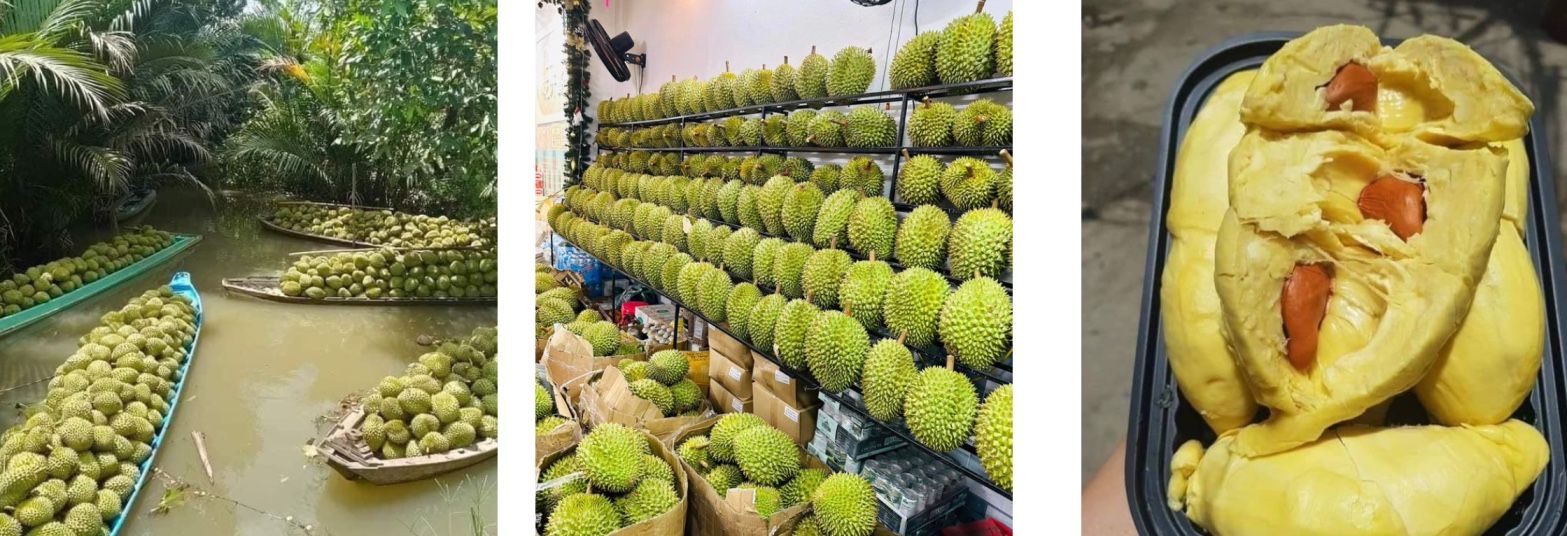
Pomelo: Bưởi
Local pomelo is a special citrusy fruit with natural sweetness and aromatic taste with variety of types found in any season and, anywhere in Vietnam.
This Exotic flavorful fruit in Vietnam is high in fiber and Vitamin C which helps for a better digestion (Reason Vietnamese eat it after lunch). In addition to the delicious taste, this is also a very suitable fruit to have in your diet.
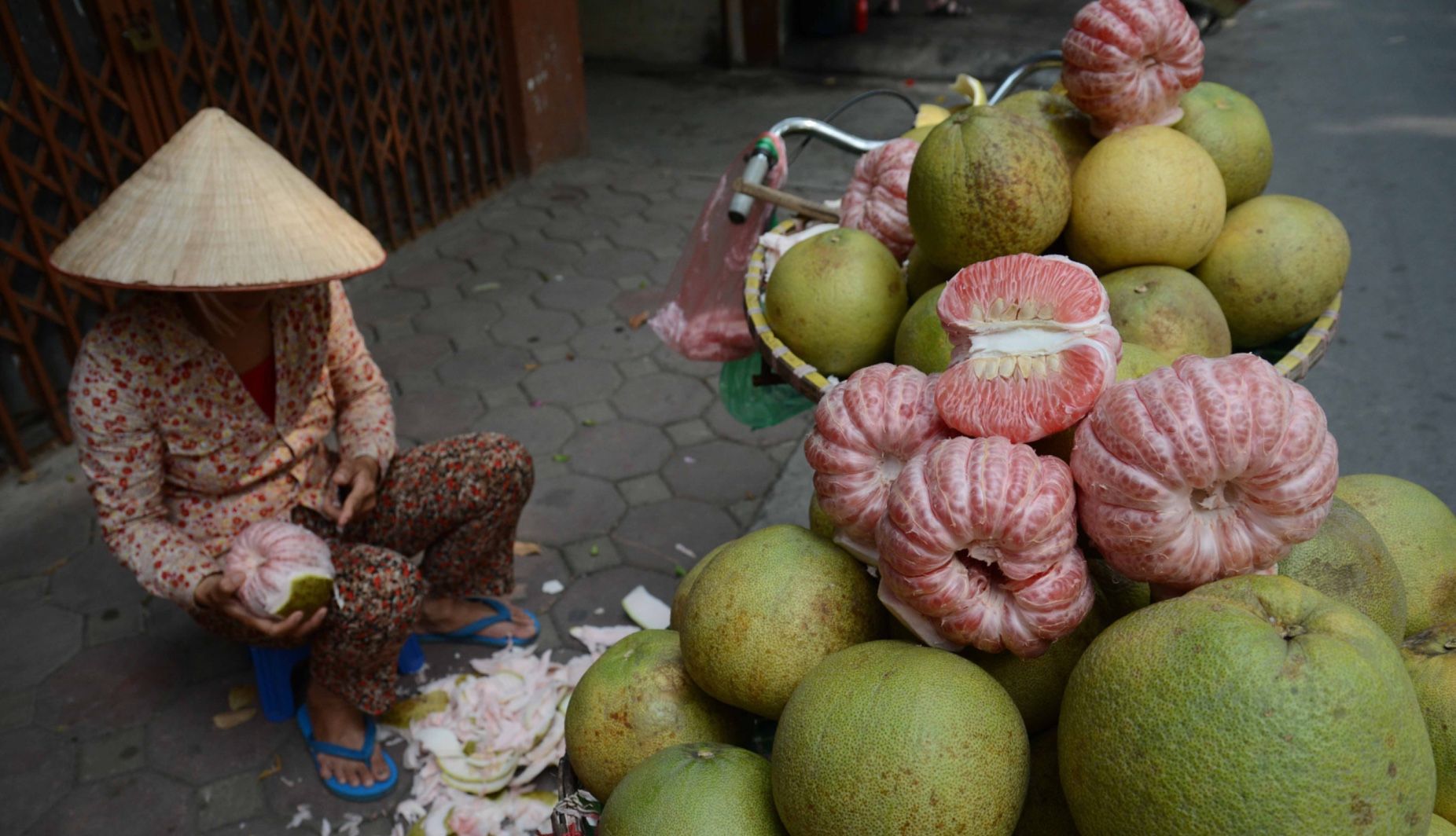
Dragon Fruit: Thanh Long
Furthermore, Vietnamese dragon fruit is cultivated in various locations, including Mui Ne Binh Thuan, Long An, Tien Giang, Nha Trang, and Ho Chi Minh City. Notably, the plant is a type of cactus. The fruit comes in three distinct varieties: two with pink skin but differing flesh colours, and another variety with yellow skin and white flesh.

Rambutan: Chôm Chôm
Rambutan known as hedgehog by Vietnamese, this tropical fruit features green pulps that are notably soft and easily removable. Among the exotic varieties, Chôm Chôm, as it called by Vietnamese stands out due to its smaller size—approximately that of a golf ball—and fewer thorns compared to the standard rambutan you may find in Thailand.
Furthermore, rambutan is the most popular tropical fruit in Vietnam during the summer season, which extends from April to June. You might use peeled rambutans into fruit salads as an ideal substitute for lychee. Additionally, consider trying rambutan juice with a hint of cinnamon or vanilla, which provides a unique and delightful summery taste.

Longan Fruit: Long Nhãn
In addition, Vietnamese Longan fruit is cultivated predominantly in southern country, where the high humidity of regions creates ideal growing conditions. The fruit grows in clusters, presenting as small round balls with soft, pale yellow skin and smoky white flesh that offers a sweet taste.
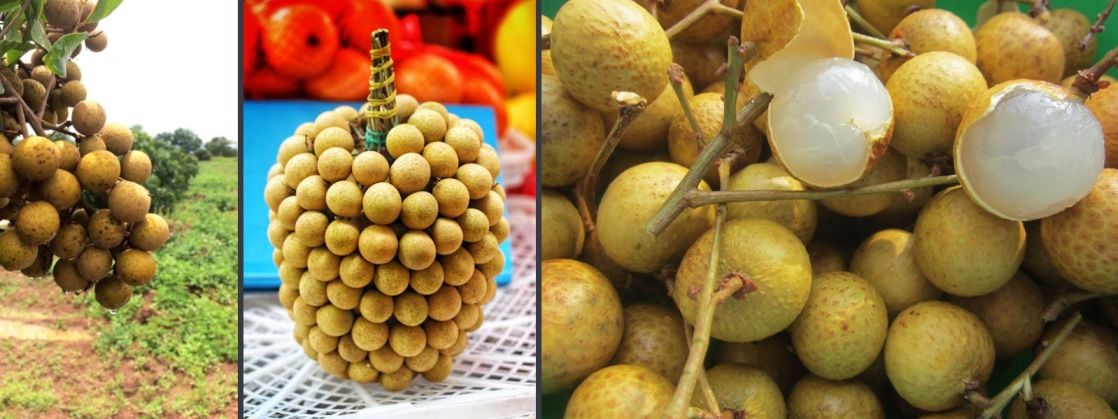
Jackfruit: mít
Jackfruit called Qua Mít in Vietnamese – Renowned as the world’s largest tree fruit, boasts a distinctive sweet aroma that enhances its tropic taste. Jackfruit features fibrous, yellow flesh that can be consumed either ripe, in a dessert, or unripe, serving as a versatile savoury meat substitute. Consequently, jackfruit holds a prominent place in Vietnamese cuisine and frequently appears in as a snack, or as in stir-fries, in desserts, or find them as a crispy chips in the supermarkets.
Jackfruit is rich in important nutrients such as vitamin A & C, calcium, potassium, iron, thiamin, riboflavin, niacin, magneisum and many other nutrients. Check out Cambodian Orange Jackfruits
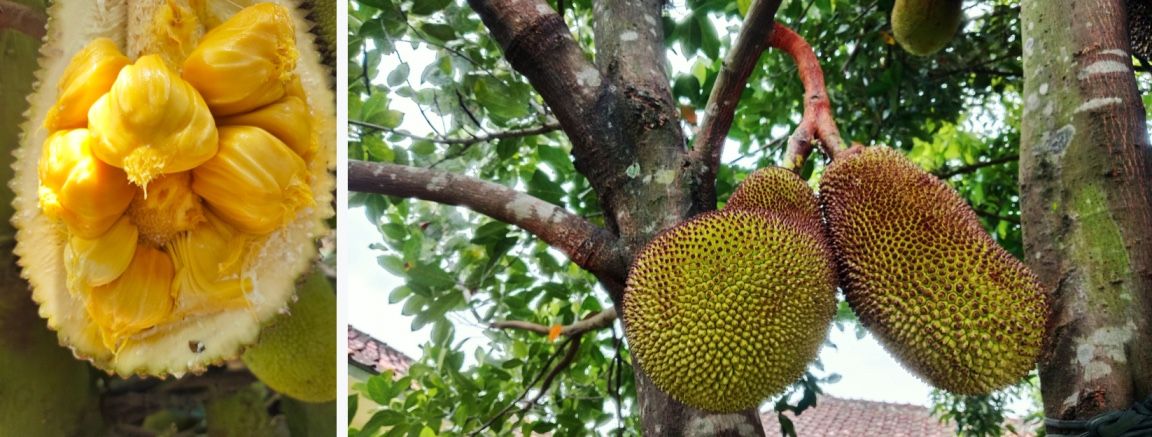
Custard Apple: Mãng Cầu Or Na
Mãng Cầu, or Na are the local names of the Custard Apple – One of the commonly consumed fruits in Vietnam, known for its health benefits. When ripe, its peel becomes soft and easily removable, allowing you to directly enjoy the sweet and creamy white pulp. Remember to discard the black seeds. The optimal time to enjoy this popular Vietnamese exotic fruit is in the autumn, from August to late September. When you buy them fresh from the wet markets – best it to place the custard apple in a paper bag.
Custard apples are densely cultivated in the south of Vietnam specially in Mui Ne Ninh Thuan and Ba Ria Vung Tau where the fertile is more humid and climate is more tropic.
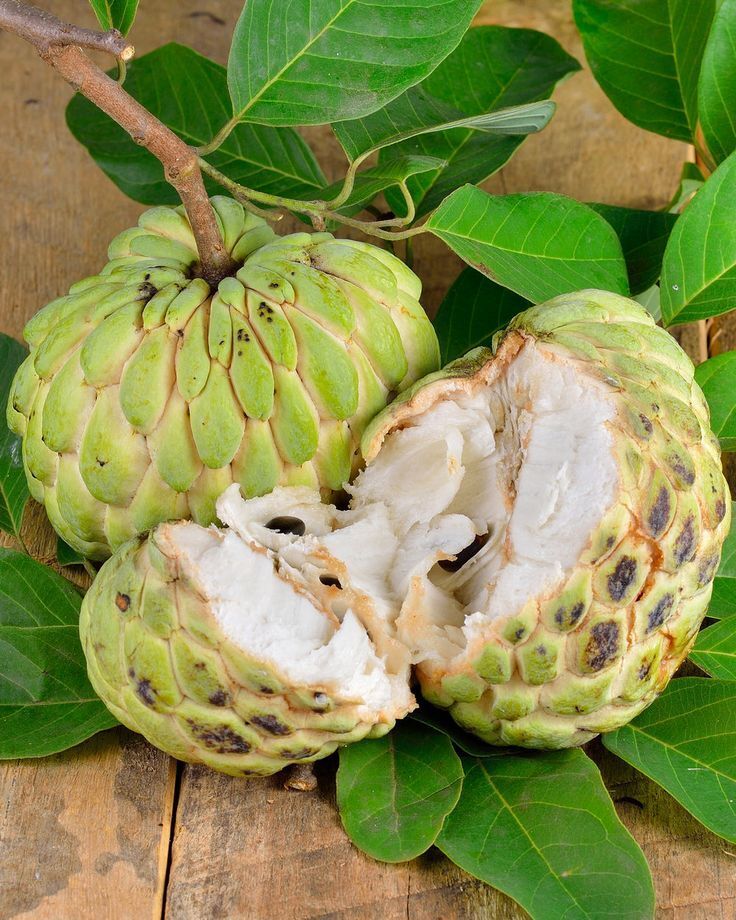
Sapodilla: Hồng xiêm
Sapodilla is another highly popular tropical fruit in Vietnam, know for its brown, round or slightly oval shape with a very thin skin. The fruit offers a sweet and delicate pulp that evokes flavours reminiscent of caramel, pear, and honey. Additionally, sapodilla contains two to five black, hard, and elongated seeds.
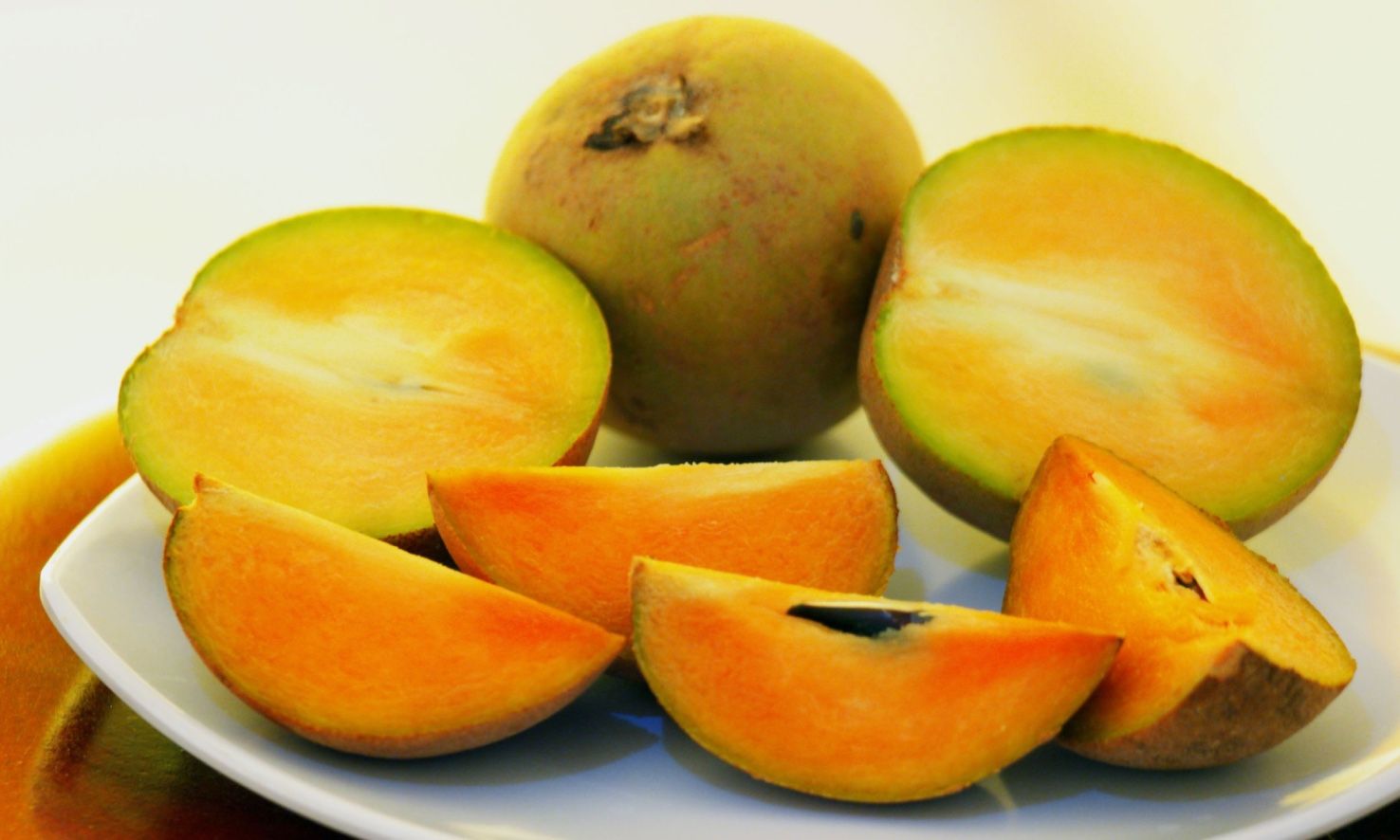
Green Tangerine
Vietnam’s Green Tangerine is a delicious fruit that is growing rapidly in the southern region specially around Mekong Delta. The lightly skinned tangerine, is one of the most popular local fruits in Vietnam widely grown in cities such as Cai Be, Tien Giang, Lai Vung – Dong Thap and Long Tri – Hau Giang.
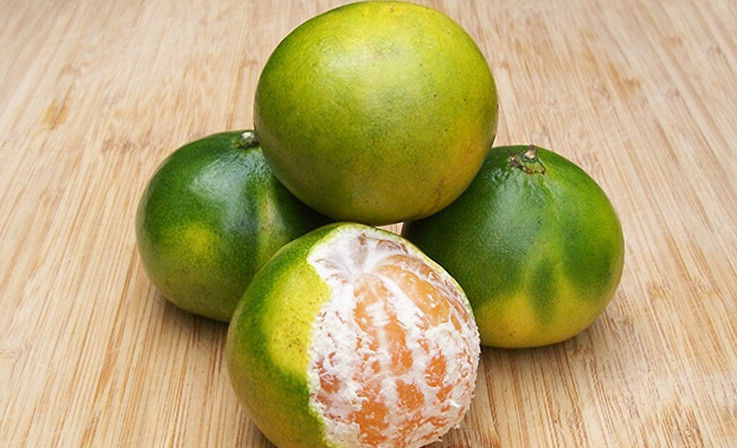
Rose Apple: Quả Roi, Or, Quả Mận
This delicious, watery rose apple, very cheap, around 30-60,000VND (1-2.5 USD) per kilo, known as a delightful and distinctive tropical fruit that epitomises Vietnam and some other South-East Asian countries such as Thailand. The rose apple’s delicate flavour and refreshing qualities have earned it popularity among both locals and tourists seeking to try Fruits in Vietnam. Additionally, this fruit is referred to as Quả Roi in Vietnam and can also be known as Quả Mận.
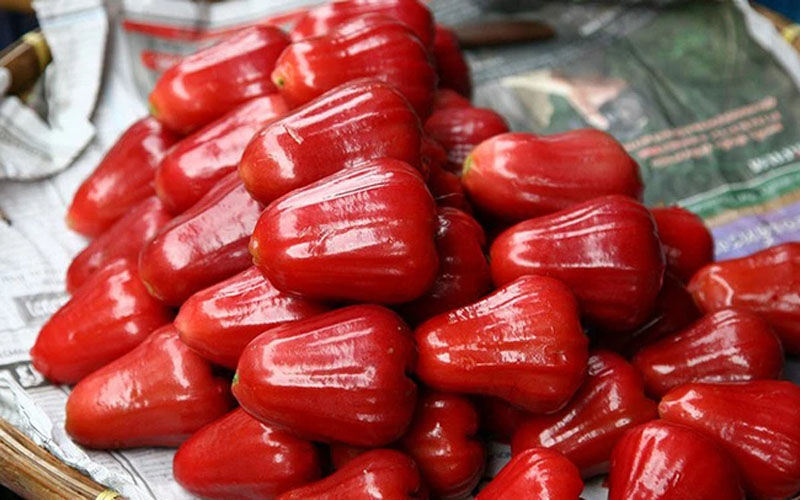
Jujube: Táo Bi
In Vietnamese, jujube fruit is referred to as ‘Táo Bi’ or ‘Táo Gió’ and it grows predominantly in Ninh Thuan Province in southern Vietnam as the sunny days are longer with enough breezy conditions . This Vietnamese exotic fruit is renowned for its crisp texture and less sweet flavour.
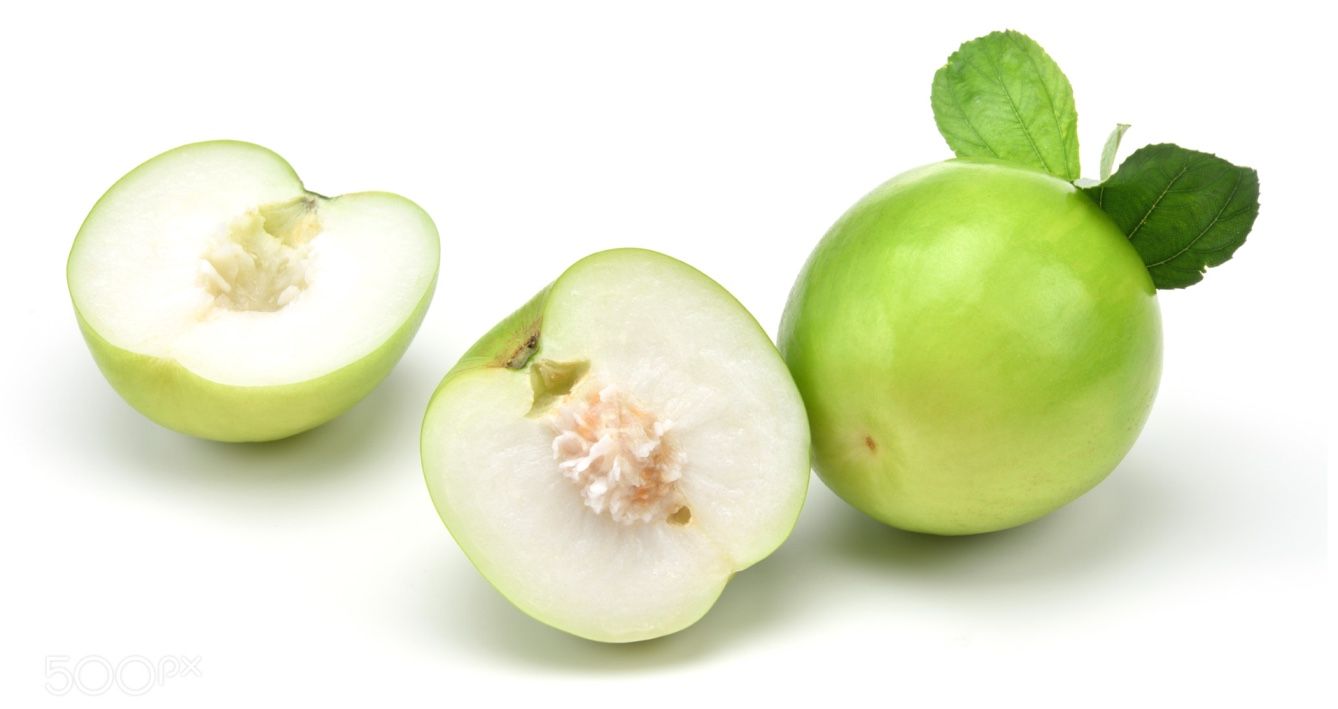
Star Apple: Vú sữa
The star apple, also known as Melastella or Cainetta – according to the old folklore, it is translated as mother’s milk this is due its milky juice squeezed out when cutting the fruit. In Vietnam, the most renowned variety of this fruit comes from Lò Rèn Vĩnh Kim of Tien Giang Province. This Vietnamese fruit features a round shape as big as an orange, with green or light purple yet bitter skin but soft, tender, slightly mellow taste inside.
Currently, Vietnam stands as the sole exporter of the star apple to Europe, including UK, as well as to Canada, Cambodia, the Philippines, India, and Thailand.
An interesting fact about the star apple is that it ranks as one of the lowest-calorie tropical fruits exist, with 100 grams providing only 31 calories, making it lower in calories than most other tropical fruits.

Guava: Ổi
Ổi fruit, is another tropical fruit grow in most regions of Vietnam specially in the northern city of Bac Giang. The Vietnamese guava, typically round or oval, features a green to slightly yellow skin when ripe. Its flesh can be milky white, or slightly red, and it offers a dry but slightly tangy flavor. Also, Guava fruit is extensively cultivated in the Mekong Delta, Thai Binh, Ha Noi and Hung Yen.
Vietnamese guava remains available anytime of the year although its taste may vary slightly with the seasons. In Vietnam, people often enjoy guavas raw with a pinch of salt and chili to mix up the flavour.
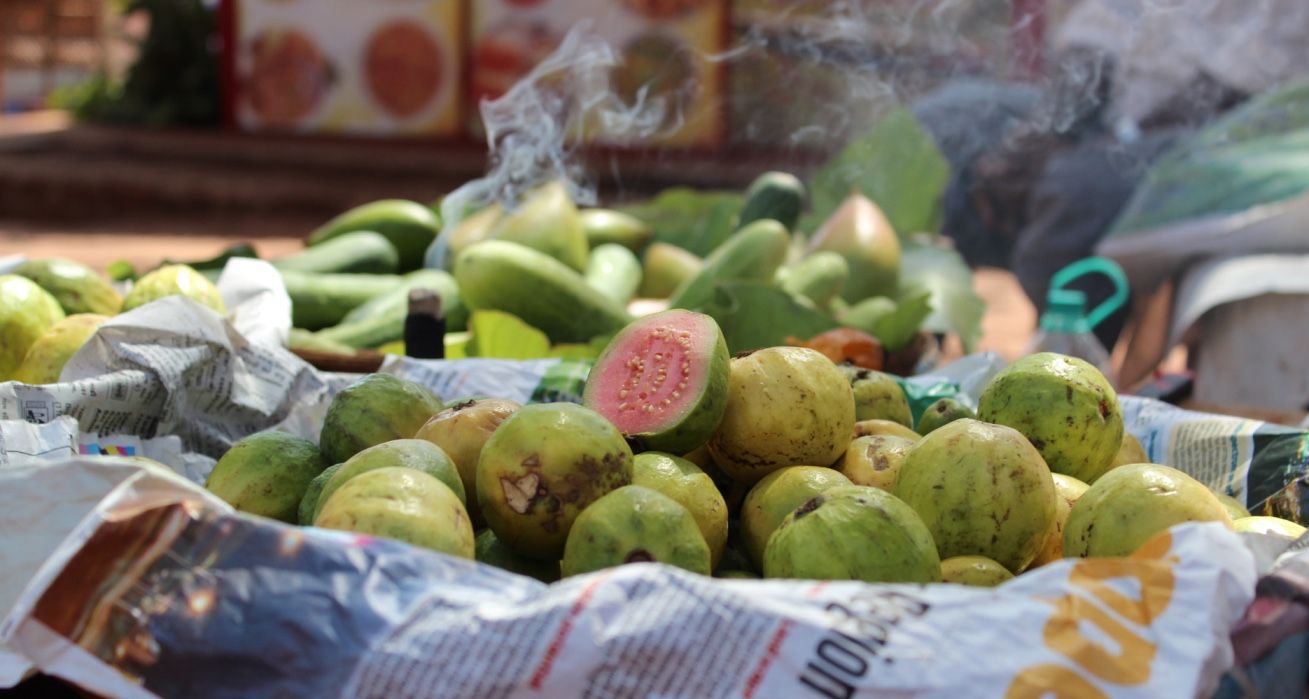
Lychee: Vải
Summer marks the lychee season. Although this fruit predominantly grows in the north of Vietnam, however, it is readily available throughout the country. Lychees, or Quả vải in Vietnamese, are exceptionally juicy and sweet, making them easy to consume. However, one should note that lychees do not stand well for more than a day or two. Therefore, it is advisable to store them in the refrigerator to maintain their freshness.
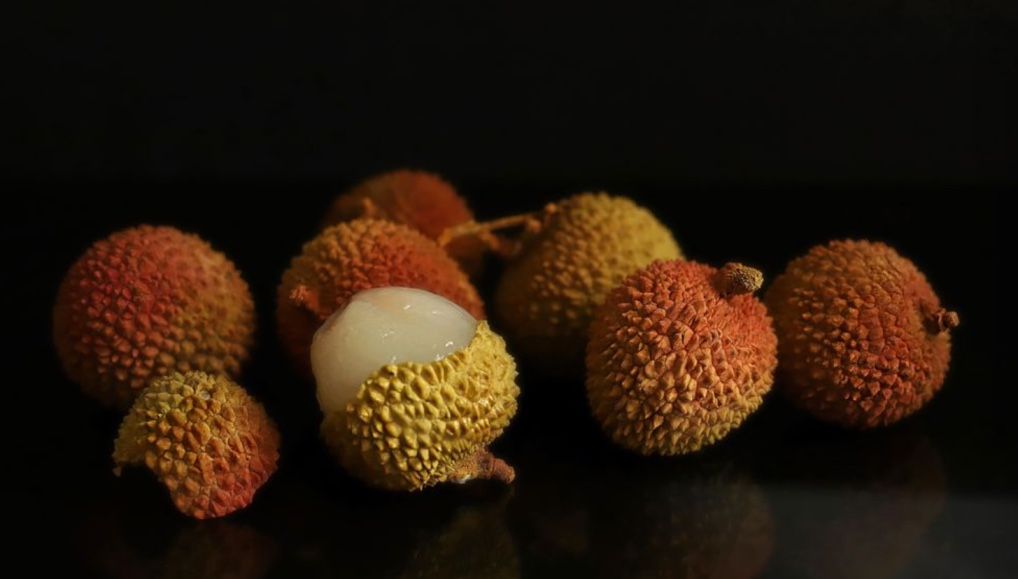
Passion Fruit: Quả chanh dây
Locally known as Quả chanh dây, is a popular fruit in Vietnam to eat. This tropical fruit, widely found among fruits in Vietnam, offers a tangy flavour and is rich in antioxidants and vitamins. Its vibrant taste and health benefits make it a sought-after choice for many.
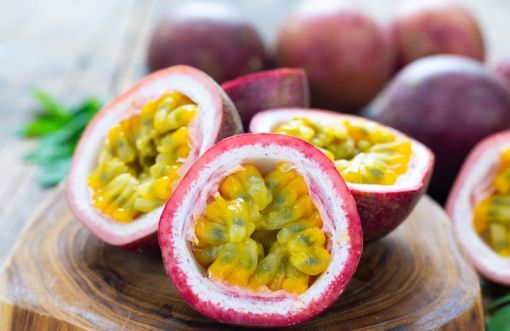
Langan fruit: Bòn bon
The Longan fruit (Quả bòn bon), scientifically known as Lansium domesticum, is a tropical tree widely cultivated across various provinces in Vietnam. This Exotic Vietnamese fruit is round, with a light skin and opaque white flesh that contains approximately 5 to 6 segments. Longan fruit is rich in vitamins and minerals beneficial to human health. It has a slightly sour taste, which becomes sweeter as it ripens.
Longan, or Bòn bon, a tropical fruit found in Vietnam, contains carotene, which provides excellent antioxidant benefits. Carotene helps prevent the formation of harmful cells and supports the maintenance of beneficial cells within the body.
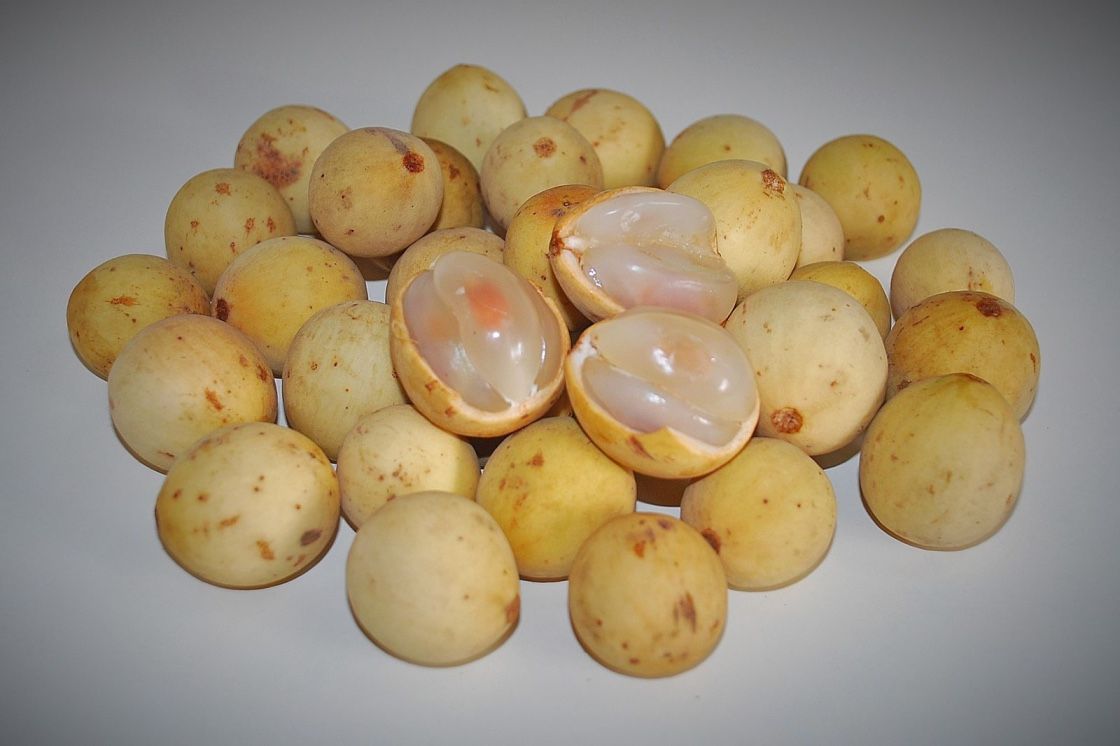
Star fruit: Khế
A Popular Fruit in Vietnam – Ripe and golden star fruit offers a refreshing and juicy treat that many people enjoy. This tangy delicacy is a popular fruit in Vietnam, particularly available year-round in the Mekong Delta.
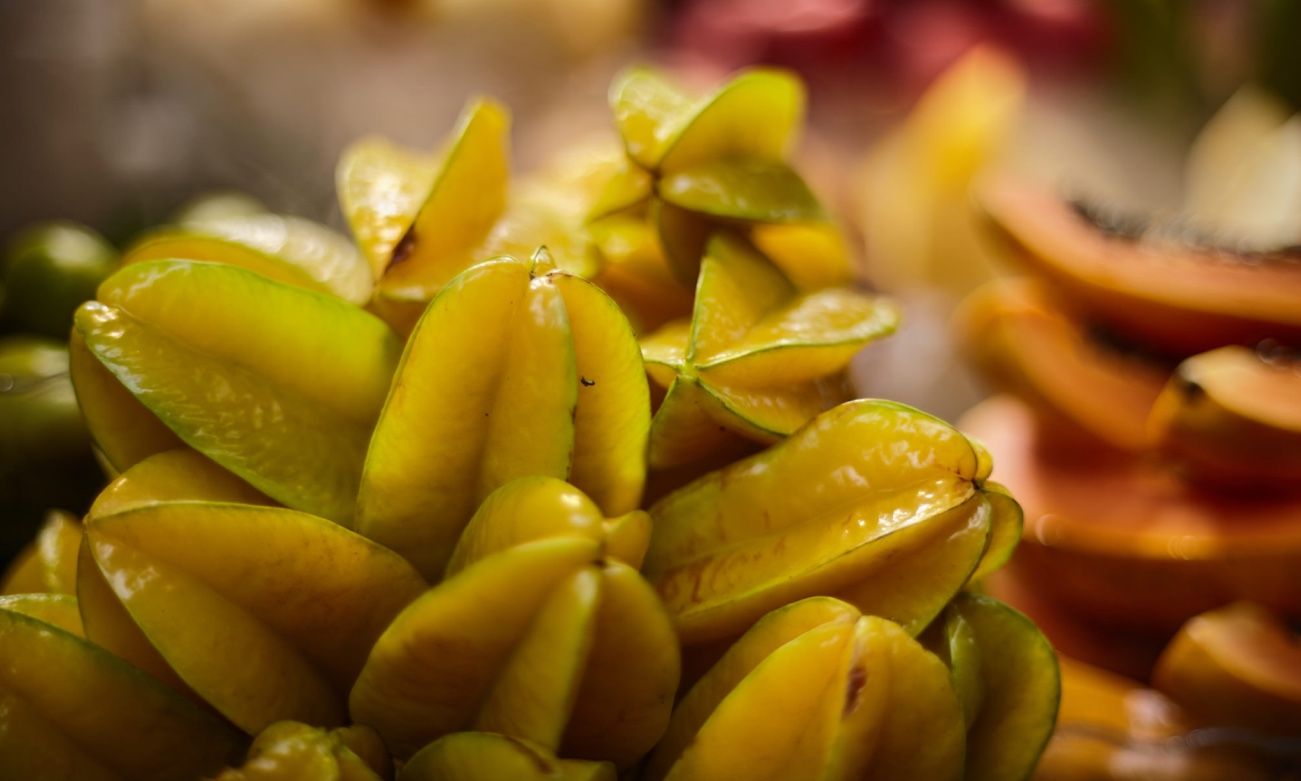
Mango: Xoài
Mango is a popular fruit found in so. many other tropical countries all across the world – In Vietnam, there are more than dozens of different species of Mango that is originate and grow only in some part of the countries. Mangos are all fleshy, juicy and aromatic and are available just about anywhere in Vietnam.
- Hoa Loc Sweet Mango
- Acacia Mango
- Cat Chu Mango
- Elephant Mango
- Cam Lam from Khanh Hoa

Soursop: Mãng Cầu
Soursop is called Mãng Cầu, in an oval shaped very popular among Vietnamese fruits famous for its aromatic taste. Soursop fruit with a dark greenish skin with inner white flesh tastes much like a pineapple with sweet and sour flavor.
All parts of the soursop tree, including the shell, flowers, leaves, fruit, roots, and seeds, offer health benefits. As a popular fruit in Vietnam, soursop enjoys widespread appreciation for its taste and nutritional value among fruits of Vietnam.

FAQ: Popular fruits of Vietnam
A lot of fruits are actually very common in South-East of Asia, you can find Mangosteen in Thailand, Coconut across the region and other fruits such as rose apple and Mango. Here are few FAQ about fruits in Vietnam;
What is the most popular Vietnamese fruits?
Beside all tropical fruits & flavors i’ve mentioned in this post, there are a large variety of popular fruit in Vietnam you must try for a healthier holiday. Some of the exotic fruits I didn’t mention in the list of 20 tropical fruits including:
- Coconut (Dừa)
- Papaya (Đu Đủ
- Ambarella fruit (Cóc) also known as golden apple or jew plum,
Of all fruits, there are an array of tropical tastes, either originates to Vietnam or South-East Asia or thriving due to its varied semi-tropical climate. These fruits are a part of the Vietnamese culture, offering variety of flavors from the sweet and juicy to the uniquely tangy.
What is Vietnam’s National Fruit?
Dragon Fruit (Thanh Long), names the Vietnam’s National Fruit. However, this is a little confusing since there are a few other Vietnamese Fruits that has been in the list by locals. Anyway, when it comes to name the “Vietnamese National Fruit” Dragon Fruit , has been declared strongly as the national fruit, signifying the nation’s commitment to preserving its natural cultivation.
What fruits are in season in Vietnam?
When visiting Vietnam, one often encounters a diverse array of season fruits that leave your mouth watering. As a country of tropical seasonal fruits of any type, Vietnam provides year-round seasonal access to various fruits. However, people typically enjoy fruits according to their seasonal availability.
Fruit seasons in Vietnam are depending on the region. Some fruits are available throughout the year but are considered especially delicious during specific times. Certain trees produce a larger yield in particular seasons, while other fruits only appear during specific periods.
What is Jicama fruit in Vietnamese?
Jicama in Vietnamese called củ đậu and it is a very common type of fruit Vietnamese often consume after lunch or dinner break.




